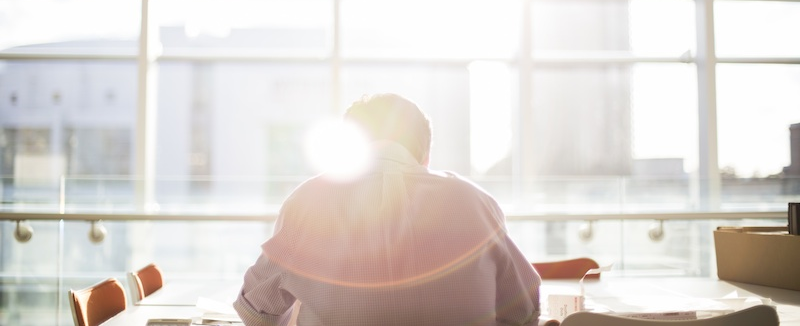
Aprivé Wellness Blog
Healthy Travel Tips
In-Room Stretches For Healthy Hips
Do your hips and back feel stiff and stuck after travelling on a plane, or even after a long drive? Don't worry, there are easy stretches you can do right in your own hotel room! Give them a try.
Firstly: Why do you need to mobilise the hip?
When you sit all day, your hips are constantly flexed at 90 degrees. As the hip is a ball and socket joint, it's designed to move around in many directions, so it doesn't like being stuck at 90 degrees all day. The muscles that attach to the femur, plus the glutes (butt muscles) and your hip flexors become short and weak from too much sitting, so stretching and moving is the best thing you can do to ensure you have a healthy hip joint for longer.
1. Sitting Gluteal Stretch
This stretch can be done in your plane seat, at a desk, or on the bed of your hotel room.
While you’re sitting, bring your right ankle up to rest on your left knee.
With a straight back, gently lean forward, placing gentle pressure from your right forearm onto your right knee, gently easing it toward the floor.
Hold as you count to thirty,
Gently let go and repeat on the left.
Pic by Lifehack.org
2. In-Room Hip Flexor Stretch
This stretch is perfect to when you arrive at your hotel room. It's a great way to release the hip flexors that have been shortened throughout your trip.
Standing up tall, place the shin of your right leg on a chair or on your bed, making sure you left foot is straight.
Standing on the left leg, bend your left knee into a lunge position
Hold as you count to thirty
Gently let go and repeat on the left.
3. Spinal Massage & Child’s Pose
Lying on your back, bring your knees to your chest and gently rock side to side. This helps to release the erector spinae muscles that run parallel to the spine.
Next, on your hands and knees, gently rock back until you’re sitting on your heels, and stretch your arms forward for a real spine stretch into child’s pose. Rest here for a few breaths. If it’s more comfortable, place your hands down by your side instead of stretching them out in front.
4. Restore mobility with a spinal roll down
The hip joint, pelvis and lower spine are all connected, with many muscles joining these bones together. A spinal roll down is a great way to let gravity help you gently stretch the muscles and nerves of your lower spine and pelvic region. Check out the video below to learn how to do a spinal roll down.
Standing up tall and breathe in
Breathe out as you gently tuck your chin to your chest and roll all the way down to the floor.
Let your arms go floppy and your head hang.
Breathe in at the bottom, and breathe out as you roll all the way up to the top, thinking of stacking your vertebrae, one on top of the other.
You can repeat this roll-down a few times until you feel ready to sit back down.
If you get hip pain, low back pain or feel sluggish after travelling, try the stretches above when you arrive in your hotel room. If you're not sure how to get started with moving better at work, see a good Physiotherapist, or get in touch with me to get help, and start living your healthiest life at home, and when you travel.
Need More Motivation To Live Healthy?
Your Health at Work: 3 proven ways to be healthier at work
We all work a lot, but some of us don't realise the truly devastating effects of having a sedentary work life. There are things you can do to stop your work from shortening your life span though, and they really work!
Heart disease, stroke, type 2 diabetes, depression: You're 90% more likely to suffer from one of these diseases if you sit for more than 8 hours a day. With studies showing most Western office workings sit for more than 9 hours a day, the risks are terrifyingly real. Unfortunately, hitting the gym for an hour after work doesn't combat the negative effects of sitting all day either. The damage is already done to your arteries, cortisol levels, fat metabolism, and mental health.
It’s not all bad news though! There are effective ways to combat the detrimental effects of sedentary work. These tips are based on evidence-based strategies we know really work - now it's up to you to try them!
1. Get up from your desk every 90 minutes
As soon as you get up and walk a few metres, your body’s metabolic processes get kicked into gear. Your cortisol levels decrease as your body’s stress levels lower. If you go for a fast walk, endorphins kick in, and the mechanisms in your muscle that stimulate fat metabolism are enhanced. The curves in your spine are also restored to normal, and the ciliary muscle in your eyes relax.
Benefits: Decreased back pain, increased fat metabolism, decreased stress, increased ‘happy’ hormones, decrease eye strain, decreased headache.
2. Walk somewhere for lunch
After eating, insulin is excreted by the pancreas to balance blood sugar levels. Due to an as yet unknown mechanism, when we sit for long periods, our bodies produce increased amounts of insulin. This puts you at a much higher risk of developing type 2 diabetes if you sit constantly and consistently without getting up.
Great news! By getting up and out of your chair, the pancreas is less stimulated to produce insulin. So go out and eat in a park and walk back to work (or even outside your office building)
If you’re working on something particularly stressful, your blood flow becomes restricted to the intestines in the fight or flight response. This makes digestion harder, and causes food to sit stagnant, causing gas and bloating. No thanks! Take just 10 minutes on you lunch break to get away from work, and combat the stress response. It will help you digest your food!
Recent research found those who sat for very long periods of time are twice as likely to develop diabetes and heart disease, than those who move around throughout the day.
3. Try a standing desk for 70% of your day
They’re not just trendy, they really work!
A recent study showed a 32% decrease in back pain in those with standing desks.
We also know standing helps stimulate the metabolic processes, making fatty deposits in your arteries (artherosclerosis) that leads to heart disease less likely.
Standing and moving helps stimulate production of endorphins and prevent the stress response to be activated when it’s not needed, like when you’re at work.
Studies are also finding you’re more productive, can make faster decisions and have better mental acuity when standing.
You have to work, and your work involves an office. I get it. But modern science is proving traditional work lives are really detrimental to our health. These 3 small changes can really make a difference to your health; both mental and physical - so why not give them a go?
To get the free 1 page guide on the top 5 foods to supercharge your health for winter (and help you stay healthy while at work) Click the button below:





